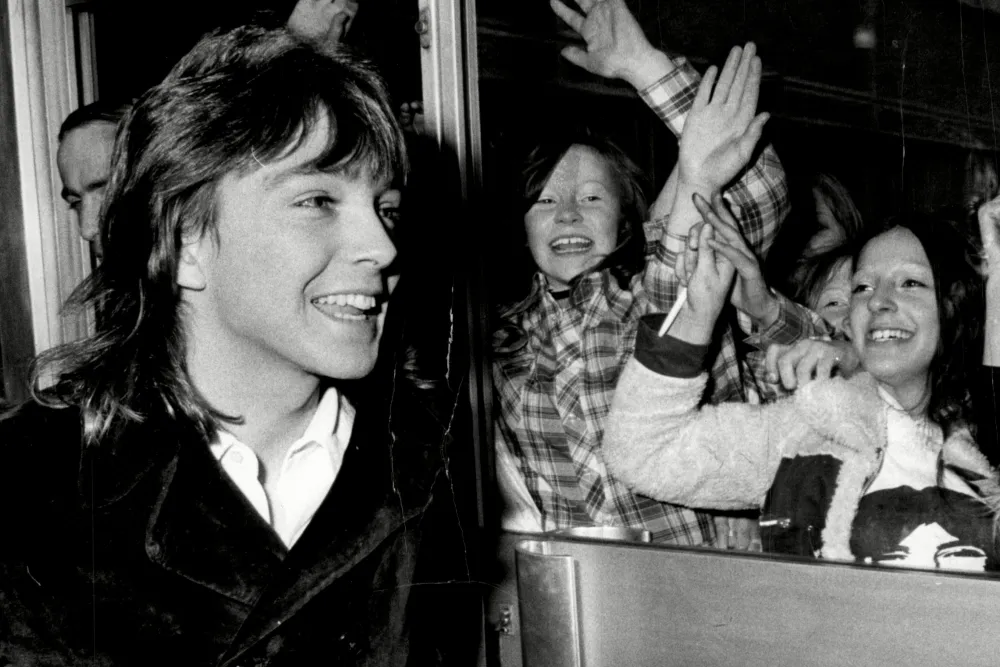
A velvet-voiced invitation to choose tenderness over glitter—David Cassidy turns a sleek West Coast groove into a promise on “Get It Up for Love.”
Here are the anchors that matter when you drop the needle. “Get It Up for Love” is track six on The Higher They Climb (The Harder They Fall), released in July 1975—Cassidy’s first RCA album after the Bell years, co-produced with Bruce Johnston of the Beach Boys. Issued as a single that summer, it was paired in the U.K. as a double-A side with “I Write the Songs,” climbing to a No. 11 peak on the Official Singles Chart for the week of August 9, 1975; in the U.S., it appeared as RCA PB-10321 but didn’t post a Billboard Hot 100 entry. The album itself later settled at No. 22 in Britain, proof that Cassidy’s adult turn had an audience beyond teen-idol nostalgia.
There’s a clever twist to the backstory: this is Ned Doheny’s song—Cassidy recorded it first. Doheny wouldn’t issue his own version until 1976 on Hard Candy, but Cassidy carried the tune into the studio a year earlier and made it the hinge of his reinvention. You can hear why he wanted it. The lyric folds a wry Los Angeles aphorism into a generous proposition: amid a world that “gets it up” for money, fashion, or status, the only lift that lasts is love. When Cassidy sings that title phrase, it lands less like innuendo than a raised lamp in the dusk—adult, assured, and oddly tender.
On the tape, the glow comes from a small army of ringers who knew exactly how to make mid-’70s blue-eyed soul breathe. Leland Sklar’s bass moves like a steady hand at the small of your back, Ron Tutt’s drums sit just ahead of the beat, and Bill House threads clean, unfussy guitar replies. Ned Doheny himself adds acoustic guitar; John Hobbs tucks an electric-piano shimmer under the chorus; and the background voices—Carl Wilson (Beach Boys), Gerry Beckley (America), Richie Furay (Buffalo Springfield/Poco)—feather the edges without stealing the scene. It’s the L.A. session ideal: warmth, air, and zero waste, guided by David Cassidy and Bruce Johnston at the board.
Some chart knuckles to round out the picture: beyond the U.K. Top 20, the single surfaced in Australia (No. 85) and was a Top 10 hit in South Africa, while Ireland logged it as part of that same double-A side push. Those numbers don’t read like a blockbuster, but they tell the real story of this period: Cassidy stepping off the teen-idol freeway and finding steady traffic with grown-up pop and R&B colors.
A bit of lore has clung to the record, too. In Britain the track was reportedly frowned upon by the BBC for being a shade too suggestive—ironic, given how gentlemanly Cassidy sounds on the mic. Whether or not every programmer actually shut the door, the rumor stuck, and fans can still point to the single’s chart run to say the public wasn’t the least bit scandalized.
Listen with older ears and you’ll hear what the title really asks for. “Get It Up for Love” isn’t about flash; it’s about priority. Cassidy sings slightly behind the pocket, the grain in his upper register turning the invitation into a vow: choose warmth over spectacle, devotion over distraction. The band’s restraint completes the message. No gaudy key change, no grandstanding solo—just a confident, mid-tempo glide that makes a living room feel softer by the first chorus. It’s the kind of record you put on after the day has tested your patience and you’re ready to be kind to each other again.
The song also proved portable. After Cassidy’s single, Doheny reclaimed it on Hard Candy, where the tune’s honeyed chords slid into yacht-soul perfection; within two years Maxine Nightingale folded it into her 1977 album Night Life, and by 1979 Táta Vega turned it into a club mover, helping a double-sided 12-inch reach the Top 20 on Billboard’s Dance chart. Covers come and go; what stays is the frame Cassidy built first—an easy lope, a gentleman’s baritone, and a sentiment that outlives fashion.
And that’s why this cut endures inside The Higher They Climb (The Harder They Fall). It’s not the loudest moment on the record; it’s the center of gravity. All the talk about image and transition falls away when that electric piano glints and the background voices rise. You don’t have to be young to believe him. In less than four minutes, David Cassidy makes a modest, adult promise sound like the most glamorous thing in the world: two people choosing warmth, again, when the world keeps flashing other options. On old speakers or new headphones, “Get It Up for Love” still turns a quiet room golden.